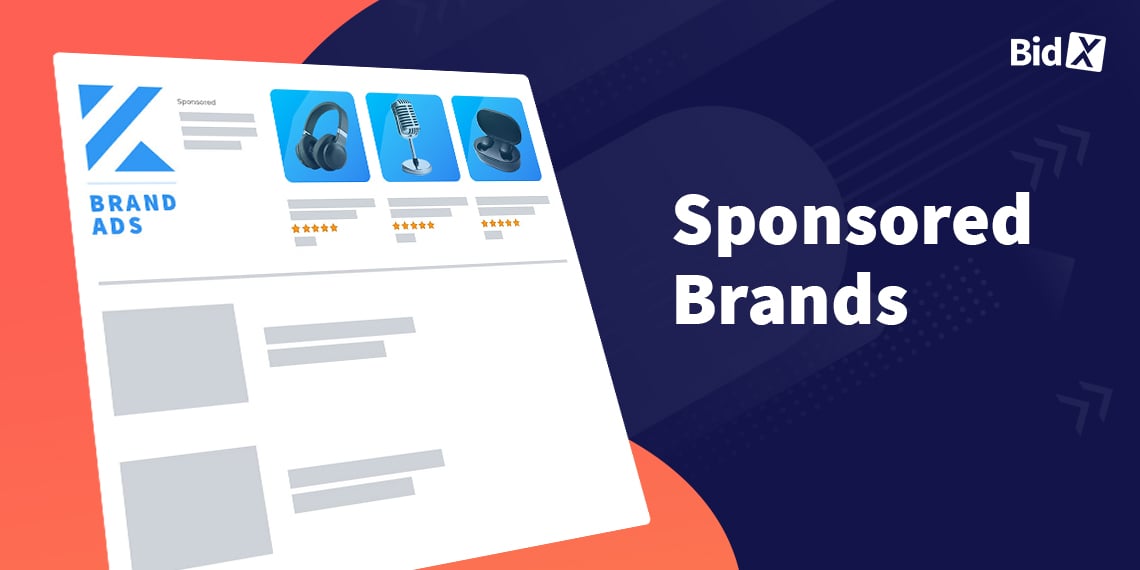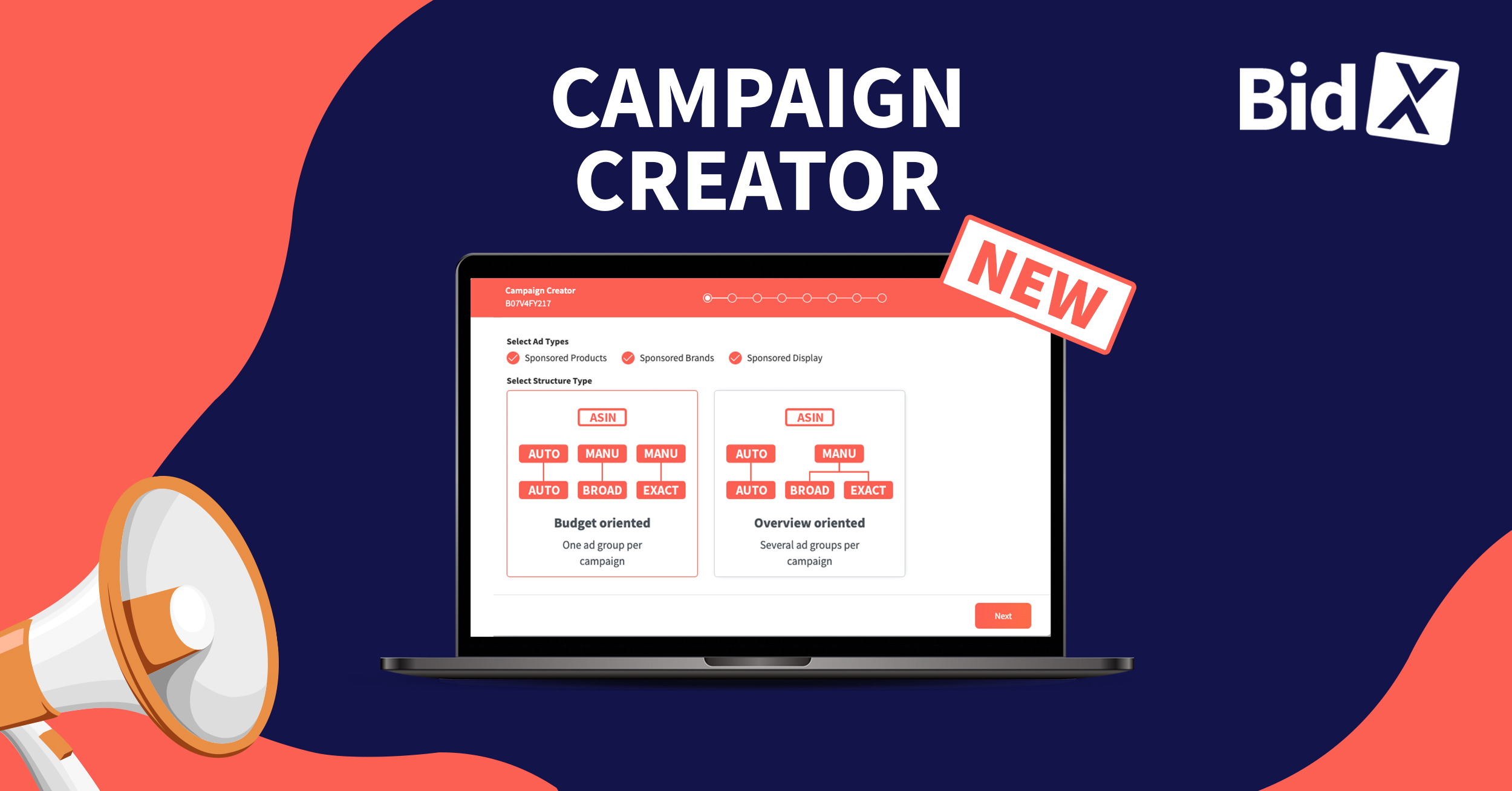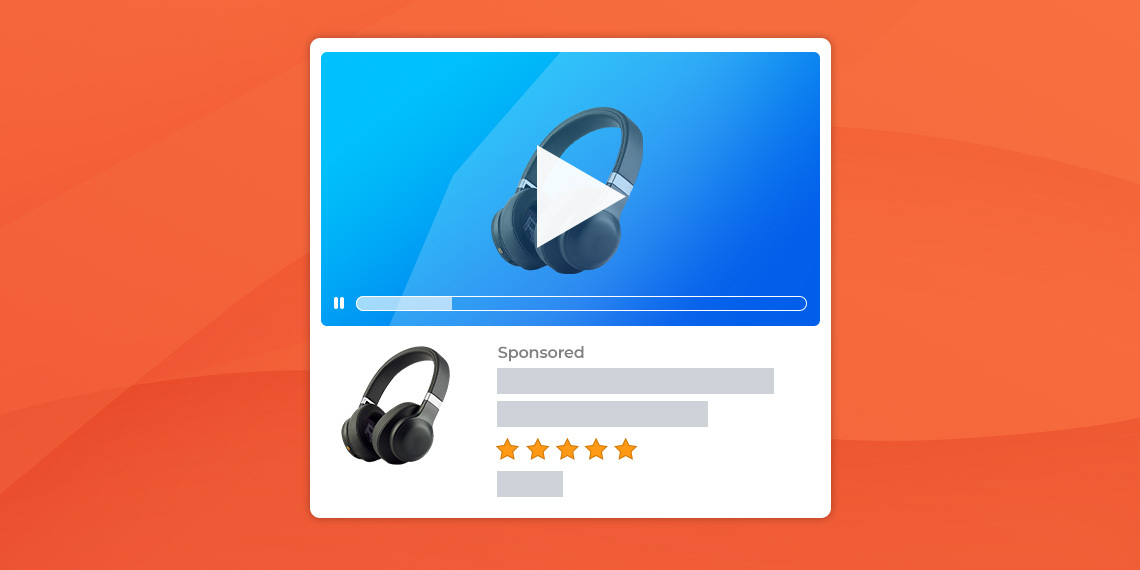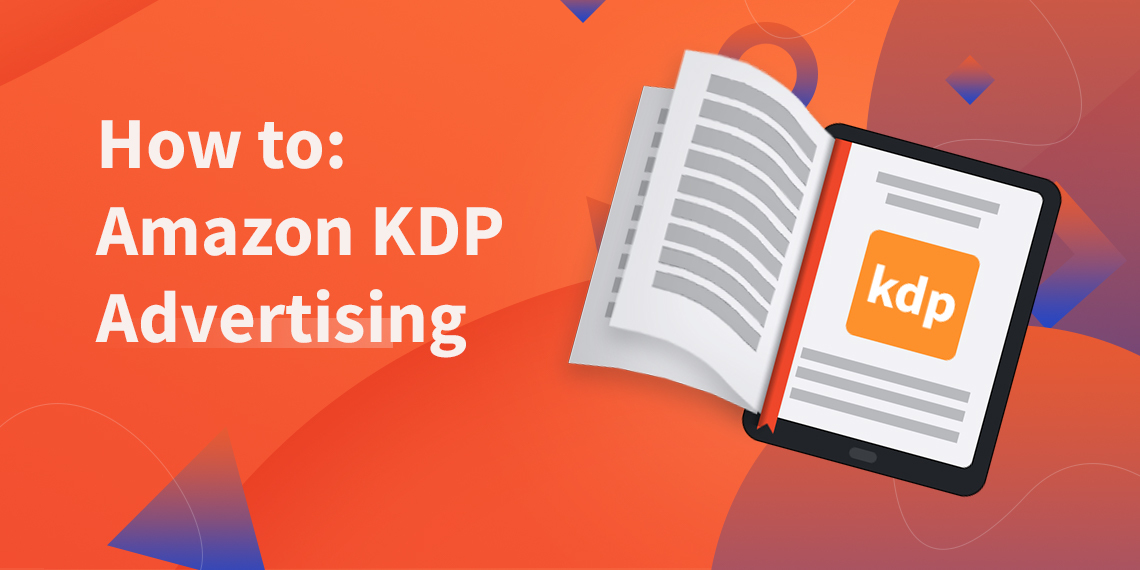The best way to use Sponsored Brands
Helpful tips and recommendations for an optimal creation of Sponsored Brand Ads can be found in our Sponsored Brands Guide.
What are Sponsored Brands?
Sponsored Brands (SBs) is an advertising format on Amazon that can be used for PPC Ads. Sponsored Brands can be targeted on keywords as well as products. They are very interesting for advertisers mainly because of their attractive placement as well as their various design options.
Where are Sponsored Brands displayed?
Sponsored Brands are displayed directly below the search bar, but still above the organic search results and the Sponsored Product Ads. SBs can also be displayed below the filter options on the left side and at the bottom of the search page.
With product targeting campaigns, SBs are also displayed on product detail pages.
Who can use Sponsored Brand Ads?
To use Amazon Sponsored Brands you need to:
- be registered in the Amazon brand index
- have an appropriate brand logo
- be able to deliver to every address within the country of the marketplace
- sell products from one of the available categories
- sell at least three products of the same brand (respectively one product for Sponsored Brands Video)
- make sure, you are not selling used or refurbished products
- use a valid payment method
What are the formats for Sponsored Brands?
You can choose between three different types of formats for Sponsored Brands: Product collection, Store Spotlight and Sponsored Brands Video.

Product collection
In the product collection ads, three products are displayed next to your brand. The choice of products and their order are completely up to you. The only other thing you need to enter to create a product collection is an ad title. Users who click on one of the products are taken directly to the product detail page.
Store Spotlight
Store Spotlight ads are very similar to product collections. The only difference is that they promote stores, instead of products. So, when you click on the ad, you will be redirected to the company's brand store.
To use Store Spotlights as a merchant, you need a Brand Store on Amazon. This is a free tool where sellers and vendors can create their own store on Amazon. Here, customers can get an overview of your product selection and get to know your brand better. The store is very flexible in terms of content and structure.
Sponsored Brands Video
As the name suggests, this format consists of a video, which leads to a linked product detail page after a user clicks on the ad.
Sponsored Brand Video Ads can be displayed based on keywords or can target other products.
The most frequent playout of Sponsored Brands videos on the desktop is within the search results. The product that is promoted in the video is displayed on the right side of the video. It will display the same content as it does in a Sponsored Product Ad (title, star rating, number of ratings, price, delivery time and possibly offer).
The video will start automatically as soon as more than half of the thumbnail is displayed on the screen. It also plays without sound by default. The sound can be activated by clicking on the speaker icon located on the video. The videos are between 6 and 45 seconds long.
How are Sponsored Brands charged?
Sponsored Brands are billed according to the so-called pay-per-click (PPC) model. This means that advertisers only have to pay after their ad has been clicked.
With Sponsored Brands, advertisers can choose between a maximum daily budget or a lifetime budget. If the advertiser selects a daily budget, the respective click price is deducted from this after a prospective customer has clicked on the ad. The click price depends on how high the bids of the other advertisers are for the same keyword. Amazon proceeds according to the second-price auction, which means that the ad of the merchant who bids the most for a keyword is displayed in first place (if the Amazon Algorithms classifies the product as suitable), but this merchant only has to pay the cost of the bid of the second bidder +1 cent per click on the ad. If after several clicks the budget is "used up", the ad will not be played until midnight.
With the lifetime budget, the budget is set for the complete duration of the campaign. This can therefore only be selected if the campaign has a fixed end date.
Which playout options are available?
The playout of Sponsored Brands can be based on
- Keywords,
- ASINs or
- Categories
Playout based on keywords
Playout based on keywords is the most common form of ad playout. The ad is displayed if the entered search term of a potential buyer and the keyword match.
Difference between search terms and keywords:
Search terms are the queries that customers enter into Amazon's search input box. Keywords are the terms that Amazon advertisers enter for a product that the seller wants to advertise. This is the only way for the ad to be displayed, and only if the search term and keyword match. A search term does not have to contain exactly the same words as the keyword though.
Playout based on ASINs
The playout of an ad can also be triggered by ASINs. Instead of keywords, ASINs of products that you want to target are deposited accordingly. These can be ASINs of competitor products or your own products.
The playout of Sponsored Brands based on an ASIN takes place either on the product detail page of the corresponding ASIN or on the search results page, if the targeted ASIN is played out organically for the search term on the first search results page. The playout based on ASINs is also called product targeting or product attribute targeting (PAT) and offers a variety of possibilities to react to competitors.
Playout based on categories
In addition to ASINs, you can also select categories to which the advertised products belong. In contrast to targeting individual products, playout based on categories is usually very broad.
Note: The playout of Sponsored Brands is not dependent on the ownership of the Buy Box.
How do I create Sponsored Brands?
Sponsored Brands can be created in Seller Central or the Amazon Advertising Console. If you already use Sponsored Products, creating Sponsored Brands is very easy. You just need to make sure that each SB ad includes at least three products from the same brand.
After logging in, go to the Campaign Manager and click on "Create Campaign". Then select Sponsored Brands from the list.
1. Set a name
The campaign name is only visible to you and can therefore be chosen very individually. Our recommendation is to use a consistent, understandable name syntax.
2. Set start and end date
Select a start date and optionally an end date, or let the campaign run unlimited.
3. Set a budget
You can now choose between a daily budget or a lifetime budget. The lifetime budget can be calculated by multiplying the amount you want to spend daily by the number of days you want the campaign to run. The minimum amount for the lifetime budget is 100€.
If the product is promoted without an end date, you can only set a daily budget.
Since it is not possible to switch between daily and lifetime budget at any time with Sponsored Brands, you should think carefully about which variant you choose in advance.
4. Brand selection
If you have more than one brand in your product portfolio, you need to select the brand for which you want to run the Sponsored Brands ads.
5. Where should your ad link to?
Sponsored Brand Video Ads always link to the corresponding product page, which is why you don't see any selection options here. Also, with Store Spotlight ads, you can only link to your Brand Store.
For Product Collections, the customer can be directed to your Brand Store, a custom landing page created by Amazon, or a custom Amazon URL with at least three branded products (for Vendors only). The destination is up to you as the advertiser.

6. Design your Sponsored Brands Ad
You have the possibility to change your brand name and logo display name. You should also choose an ad title that is 50 characters or fewer, fits your brand, and appeals to your customers. If you are using a product collection and linking to a Brand Store, you can also customize the order of the products. For a Store Spotlight ad, you can additionally change the image and subtitle of each category.

7. Keyword targeting or product targeting
You can then select the targeting of your sponsored brands. Either target them by keywords or by products. Which option makes the most sense depends on your goals.
8. Set bids
You can define the bids for the respective keywords individually and manually. However, Amazon also suggests bids based on the performance of the keywords.
9. Add negative keywords
You should add negative keywords to prevent your ads from being played out for irrelevant search queries or poorly performing keywords.
10. Wait for review
Finally, you need to send your ads for review. All Sponsored Brands need Amazon's approval to be published. Therefore, check all information and products thoroughly, as you will not be able to adjust them afterwards. Amazon's review can take up to 72 hours.
Success measurement
To see which ads perform well and which do not, performance measurement is essential.
The most important metrics to evaluate the performance of your Amazon ads are:
- Click-Through-Rate (CTR)
- Advertising Cost of Sale (ACoS)
- Conversion Rate (CR)
Click-Through-Rate (CTR)
Two of the relevant basic metrics are impressions, i.e. how often your ad was displayed to customers, and clicks, i.e. the number of times your ad was clicked on. The click-through rate (CTR) indicates the percentage of customers who clicked on an ad after seeing it. This can be calculated by dividing the number of clicks by the number of impressions.
The closer this value approaches to 1 i.e. 100%, the better. It means that the ad was interesting for potential customers, because they clicked on your ad. So the search term and the product were a good match at first glance.
Which value is good and which is bad for the CTR is not clearly to say and depends on the goal and the campaign orientation.
Advertising Cost of Sale (ACoS)
One of the most well-known KPIs in connection with Amazon advertising is the Advertising Cost of Sale (ACoS). This describes the ratio of advertising costs to sales from advertising. What is a good or bad ACoS depends on your break-even ACoS. This is the point at which the costs incurred in selling, including advertising costs, for a product and its revenue are equal. In other words, there is neither profit nor loss.
The break-even ACoS is calculated by subtracting all taxes, costs and fees from the sales price of the product on a percentage basis. For example, if your profit margin with product X is 21% after all costs are deducted, then with an ACoS of 21% for this product, you are not making a loss - but you are also not making a profit. So, for this product and its campaigns, the ACoS should be lower than the break-even ACoS of 21% to make a profit on the advertising. We have visualized this in the following figure.
Basically, every campaign, ad group and also every keyword has an ACoS. Depending on which ACoS you want to calculate, simply add up the advertising costs of your campaigns, ad groups or keywords and divide them by the revenue you have generated with the corresponding campaigns, ad groups or keywords.
Formula ACoS
Note: Especially with Sponsored Brands, the ACoS does not necessarily have to be the decisive factor for measuring success. If your goal is to increase brand awareness, the ACoS does not necessarily have to be "good".
Conversion Rate (CR)
The conversion rate shows what percentage of customers have ordered after clicking on the ad. To calculate the conversion rate, the number of orders is divided by the number of clicks. A good conversion rate is an indicator that your product listing has convinced the customers.
Why should I use Sponsored Brands?
Sponsored Brands are very interesting for advertisers, especially because of their attractive placement and the various design options. Sponsored Brands are particularly suitable for increasing your brand awareness and for influencing customers directly at the beginning of their purchase decision. Especially the Sponsored Brands Video format offers new possibilities to convey messages and to arouse the interest of customers.
Download our Sponsored Brands Guide for free now. Here you will find additional tips that you can use to optimize your Sponsored Brand Ads.







